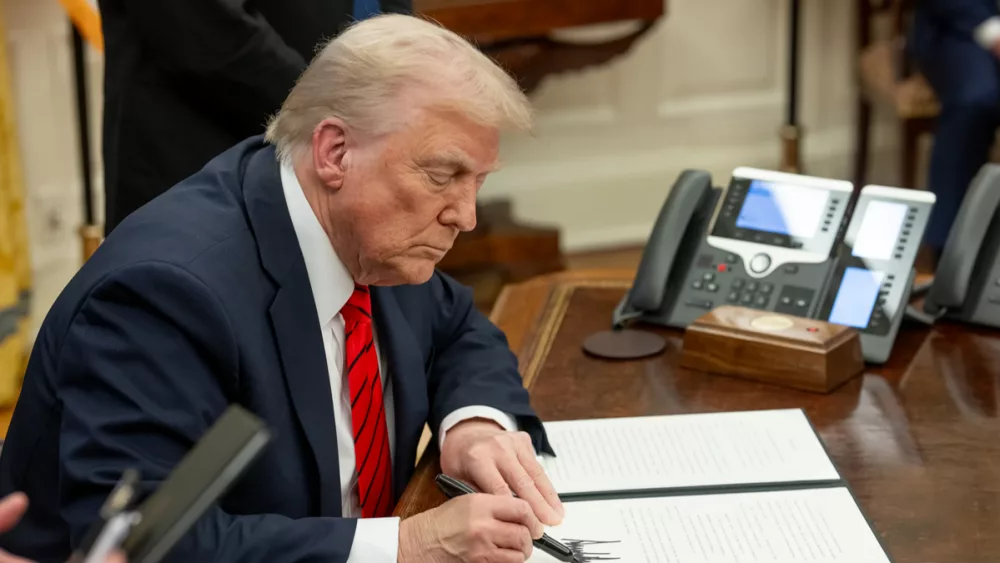WASHINGTON, D.C. – The Congressional Budget Office’s newest projects underscore the nation’s unsustainable spending plans as Republicans look to extend President Donald Trump’s 2017 tax cuts.
The CBO said U.S. debt held by the public is on track to reach its highest level ever in 2029 before reaching 156% of gross domestic product in 2055. Gross domestic product is a measurement of economic output.
“Mounting debt would slow economic growth, push up interest payments to foreign holders of U.S. debt, and pose significant risks to the fiscal and economic outlook; it could also cause lawmakers to feel constrained in their policy choices,” the CBO report noted.
Economists have debated when debt-to-GDP becomes problematic for nations, and the CBO report notes the lack of consensus.
“CBO cannot reliably quantify the probability of a fiscal crisis. In the agency’s assessment, no tipping point can be identified at which the debt-to-GDP ratio would become so high that it would make a crisis likely or imminent, nor is there a specific tipping point beyond which interest costs would become so high in relation to GDP that they were unsustainable,” according to the report.
An analysis of the CBO report by the Committee for a Responsible Federal Budget found debt would hit $138 trillion by 2055 in nominal dollars. If Congress extends the tax rates set to expire in the 2017 Tax Cuts and Jobs Act, the debt would be even higher without corresponding expense cuts.
“CBO’s long-term projections are incredibly troubling, but reality could prove even more unsustainable,” according to the CRFB analysis. “If policymakers extend provisions in the 2017 Tax Cuts and Jobs Act, it could boost debt by $40 trillion over 30 years, to above 200% of GDP.”
Michael Peterson, CEO of the Peter G. Peterson Foundation, said the report was dire.
“Today’s CBO report shows debt rising rapidly over the next three decades, and serves as a timely warning for this year’s tax policy debate,” he said. “Over the next 30 years, debt will grow to a staggering 156% of GDP. Annual interest costs will exceed $1 trillion next year, and total a stunning $76 trillion over the next three decades.”
Peterson noted that the CBO report also shows the depletion of Social Security’s retirement fund is eight years away, a milestone that could result in immediate, automatic cuts for all beneficiaries if Congress doesn’t intervene.
Peterson said lawmakers should heed the warnings in the CBO report.
“Given the severity of our fiscal condition, policymakers should use this year’s budget reconciliation and tax deadlines to improve our debt outlook,” he said. “At the very least, they should pledge to do no fiscal harm.”
Congress’s own research service, the Government Accountability Office, has for years warned presidents and lawmakers that the nation remains on an unsustainable fiscal path. The GAO repeated those warnings earlier this year.
A GAO report in January warned that unchecked spending could push public debt to 219% of GDP by 2051 and create a significant economic and national security risk.
“We project that public debt will reach an unprecedented level by 2027,” said Gene Dodaro, U.S. Comptroller General and head of the GAO. “We’re calling on Congress and the Administration to act now to develop and implement a strategy to address this acute challenge. Inaction could result in great difficulties for many Americans and impede policymakers’ flexibility to respond to future economic recessions or unexpected events.”





